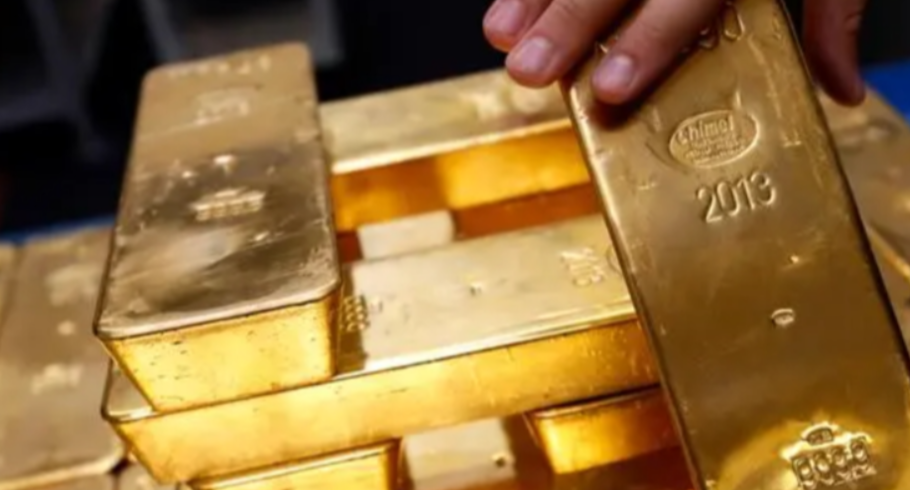Gold Price Pulls Back: End of the Rally?
Advertisements
In recent times, the gold market has witnessed a dramatic downturn, breaking significant price thresholds that had been maintained for monthsFollowing a period of sustained increases, gold prices faced a heavy drop on April 22, marking one of the largest declines seen within a two-year windowInvestors, analysts, and market watchers are now left to decipher the reasons behind this fluctuation and its potential implications for the future of gold investment.
The plunge that occurred left light on the current market sentimentOn April 22, spot gold prices fell by an astounding 2.72% to $2326.81 per ounce, with intraday trading revealing drops surpassing $60 per ounce at various pointsJust a day later, this trend continued, with prices sinking below the crucial $2300 mark for the first time in a considerable while, unsettling many who had anticipated a more stable upward trajectory.
Various experts interviewed in the wake of these losses have pointed to a pervasive "fear of heights" that had gripped the gold market in the months leading up to the downturn
Buoying this sentiment was the expectation of continued price ascent, which, as demonstrated, creates a precarious scenario for investors inclined to chase prices upwardThe recent decline, however, has prompted a reassessment of positions, with many now considering the potential for a more sustainable investment strategy based on anticipated price corrections.
In the international arena, gold prices echoed similar trends as seen in the domestic marketsThe Shanghai Futures Exchange mirrored the dramatic falls seen in London, with contracts reflecting a downward shift of approximately 3.54%. Retail prices in jewelry sectors also reflected the turmoil, with many leading brands reducing their prices significantly, creating headlines that the gold jewelry cost plummeted by roughly 14 yuan per gram overnightAn example can be seen with Chow Tai Fook, which reported their gold jewelry pricing dropping from 733 yuan per gram to 719 yuan just one day after the significant fall.
So, what might be the roots of this sudden shift in gold pricing? Analysts are speculating several contributing factors that could include economic dynamics in the U.S
- 10-Year U.S. Treasury Yields Rise
- Surge in U.S. Treasury Bonds
- The End of Prosperity in the U.S. Stock Market
- Lianlian Digital Lists on HKEX, Boosting Cross-Border Payments
- NVIDIA Stock Plunges Over 6%
and ongoing geopolitical tensionsOne pivotal element seems to be the shifting expectations surrounding U.Sinterest ratesWith new economic data suggesting that the probability of rate cuts by the Federal Reserve is slipping away, and with job growth vastly exceeding expectations, many are reevaluating their positions on goldThe U.Semployment report showed an increase of 303,000 jobs, alongside a Consumer Price Index (CPI) that rose more than anticipated, hinting at inflationary pressures that could deter rate cuts.
The trajectory of U.Smonetary policy plays a critical role in shaping gold prices, especially considering that gold is often viewed as a hedge against inflationAs inflation recovers and the likelihood of a Federal Reserve interest rate cut diminishes, many see this as potentially bearish for gold pricesIn addition, geopolitical tensions, particularly in the Middle East, have had a ripple effect on market sentiment—the recent incident involving Israel and Iran has raised questions about risk premiums in gold as a safe haven asset.
Furthermore, the gold market has exhibited signs of excessive trading activity
The numbers reveal that non-commercial long positions have surged to historic highs, indicating stronger speculative trading that could lead to technical correctionsThe overall trading dynamics have created conditions conducive to profit-taking, pushing prices downward following a significant uptick in gold values over the preceding months.
Looking forward, many analysts remain cautiously optimistic regarding gold's long-term prospectsDespite short-term fluctuations, experts like Wang Weimang suggest that the foundational elements supporting gold remain intactCentral banks continue to acquire gold, and with potential inflation risks on the horizon, many argue that the longer-term trajectory for gold could indeed remain bullish.
Others echo similar sentiments, stating that while a period of adjustment appears likely in the immediate term, overarching trends tied to monetary policy and economic conditions suggest that any downturns may prove temporary

Liu Dongmei outlines that such macroeconomic indicators, paired with ongoing geopolitical unrest and a continued appetite for gold investment, create a fluid backdrop where gold retains its appeal.
In this context, the crucial question for investors arises: Is it the right moment to enter the gold market after recent declines? Expert opinions diverge on this pointSome analysts recommend waiting for market stability post-correction before making strategic investment decisions, cautioning that while dips may represent entry opportunities, the timing remains critical in this volatile environment.
In conclusion, while the recent downturn in gold prices has raised eyebrows and instilled uncertainty among investors, seasoned analysts highlight that this is perhaps a necessary correctionThe dynamics influencing gold prices are complex and multifacetedMoving forward, it will be crucial for investors to stay informed regarding macroeconomic indicators, central bank policies, and global events, all of which hold potential sway over gold's value in the coming months.